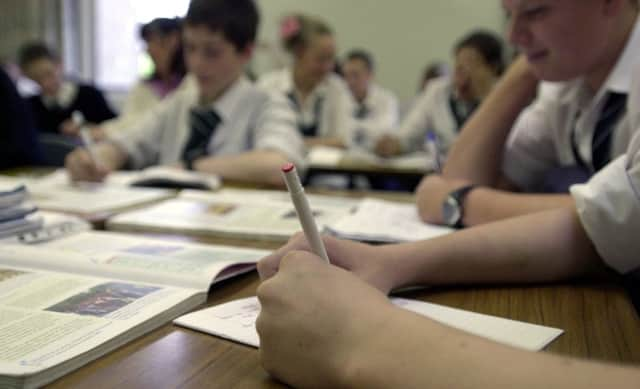Failing academies '˜excluding naughty pupils' academic claims


In some cases, they are paying other schools to take disruptive youngsters, according to Professor Alex Hill of the Centre for High Performance in Oxford.
He suggested that this system is being used because it is a fast way of rapidly improving a failing academy.
Advertisement
Hide AdAdvertisement
Hide AdSpeaking at the Global Education and Skills Forum in Dubai, Prof Hill presented the findings of a three-year study looking at how to turn around a failing academy, based on information from 160 academies that had all been put into special measures.
“Unfortunately, there’s no simple idea or action to turn around a school. Instead, what we found are that there are a series of steps that you need to take.”
Prof Hill said: “The first thing you shouldn’t do is improve teaching first. This is a common mistake. Lots of schools thought that the answer was just to put in great teachers. We found that actually, was not a good use of resources. It didn’t make sense to put good teachers into a school that had poor governance, poor leadership, operated across a lot of different sites and had poorly behaving students. Because they couldn’t have the impact they should have.”
Schools should also not reduce class sizes, as this has a minimal impact, the academic said, adding that it is more important to improve student behaviour and motivation.
Advertisement
Hide AdAdvertisement
Hide Ad“This is probably one of the more controversial findings,” he said.
“We found the fastest way to do that, which a lot of the academies do, is to significantly reduce the number of students you teach by excluding poor behaving students, in some instances we found they actually pay other schools to teach those students for them. Or, which is quite common practice, you build a new school that’s a lot smaller than the existing school so that you have the opportunity to change the student profile.
“So those are the practices we saw, very common, and that was the fastest way to change your student profile. I think we would all argue, it’s not the right solution for society in the long term.
“A better long-term practice that we saw was to create multiple pathways within the school and to take the poor behaving students and move them into another pathway so that they could be managed differently and then re-integrated when their behaviour improves.”
Advertisement
Hide AdAdvertisement
Hide AdProf Hill, who said he has sent his research to the Department for Education, said that part of the challenge for schools is that they are under-pressure to show improvement quickly.
He also said that the research had found that failing academies should not have a “zero-tolerance” behaviour policy.
“We found that although it has a good short-term impact, the impact starts to fade and in some cases we found students rioted or even revolted.
“Much better practice is to create an all-through school. Right from the age of five, all the way up to the age of 16 or 18, so that you can create the right culture early on, you can start to instil good behaviour in students and you can make sure that the bad behaviour doesn’t start to emerge.”
Advertisement
Hide AdAdvertisement
Hide AdMore than half of secondary schools in England are now academies. These schools are not under local council control, and have freedom over areas such as the curriculum and staff pay.
A Department for Education spokeswoman said: “It is illegal for any school - whether an academy or maintained - to discriminate against pupils, and all schools are held to account by Ofsted for their use of exclusion powers.
“We have given headteachers more powers to tackle poor behaviour and have ensured they can have the confidence to exclude pupils when it is absolutely necessary.
“We have also appointed behaviour expert Tom Bennett to lead a review group to help fully train teachers to deal with disruptive children.
“We will consider Professor Hill’s findings.”